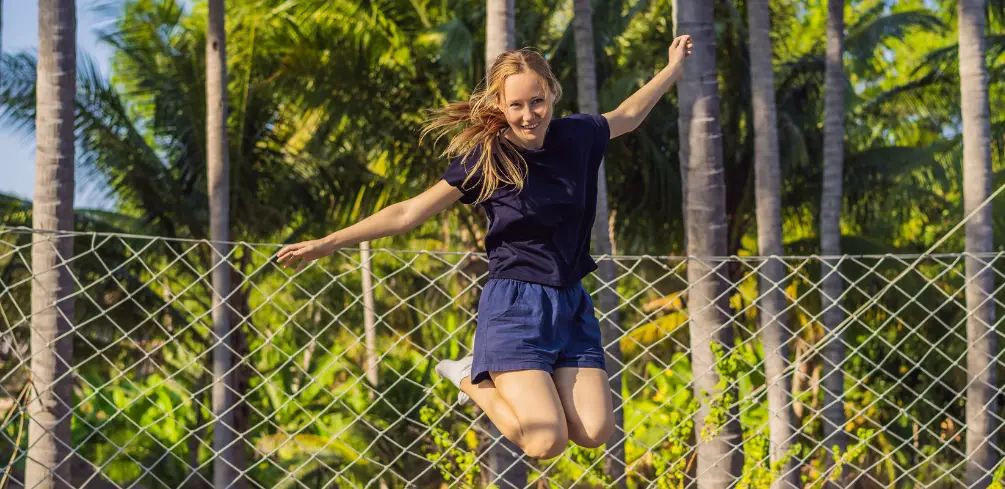So, you’ve been watching people effortlessly flip and twist on trampolines, and you’re itching to give it a go yourself.
Well, you’re in luck! This guide will walk you through the process of mastering the trampoline backflip step by step.
But before we jump into the thrilling world of flips and spins, let’s ensure that safety remains at the forefront of our minds.
After all, what’s more, important than having fun while keeping ourselves injury-free?
Now that we’ve got safety covered let’s get started on your journey to becoming a bonafide trampoline back flipper!
In this article, we’ll cover everything from building basic trampoline skills to perfecting your landing technique.
Building Basic Trampoline Skills
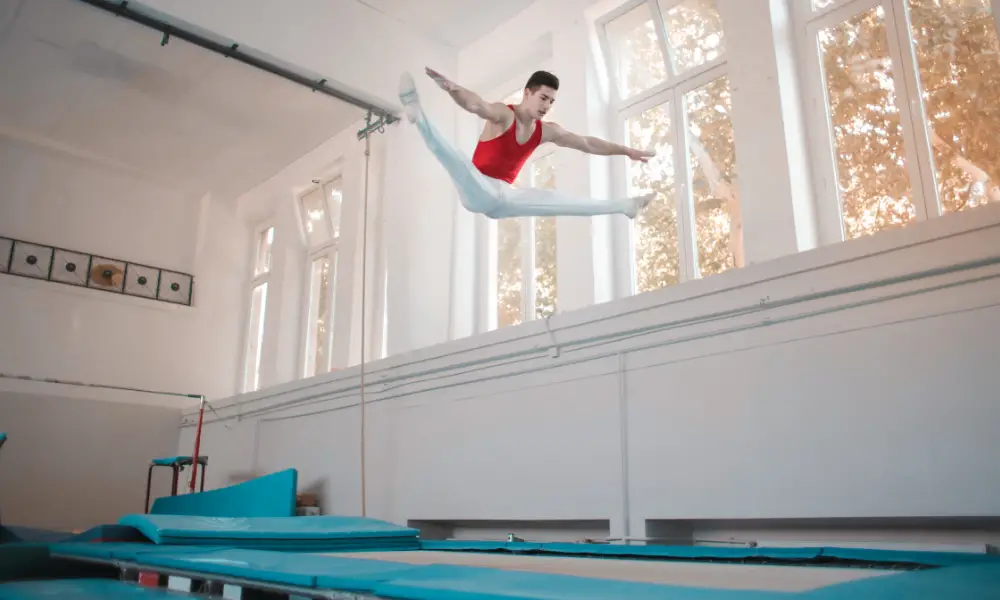
You’ll be amazed at how mastering basic trampoline skills can help you conquer that exhilarating backflip!
Before attempting any advanced moves, it’s essential to develop a strong foundation in bounce control, leg strength, arm positioning, and core engagement.
Practicing fundamental trampoline drills will not only boost your confidence but also ensure your safety as you progress toward more complex tricks.
To begin with, bounce control starts by performing small jumps on the trampoline while maintaining an upright posture.
Focus on keeping your knees slightly bent and using your leg muscles for power and stability. As you gain confidence in your jumping ability, gradually increase the height of your bounces while still maintaining control.
Additionally, work on improving your arm positioning by holding them out to the side or above your head for balance. Engaging your core throughout these exercises helps maintain proper body alignment and will provide added support when attempting flips.
For developing overall leg strength and endurance, incorporate various trampoline drills into your practice routine. One effective exercise is alternating high knee lifts during each bounce; this not only strengthens the legs but also builds coordination.
Another drill to try is bouncing from a seated position to a standing position without using hands for assistance – this challenges both leg muscles and core stability simultaneously.
Remember to always keep safety as a priority during all exercises and allow yourself time to build up the necessary skills before progressing onto more advanced maneuvers like the backflip.
Mastering the Jump and Tuck Technique
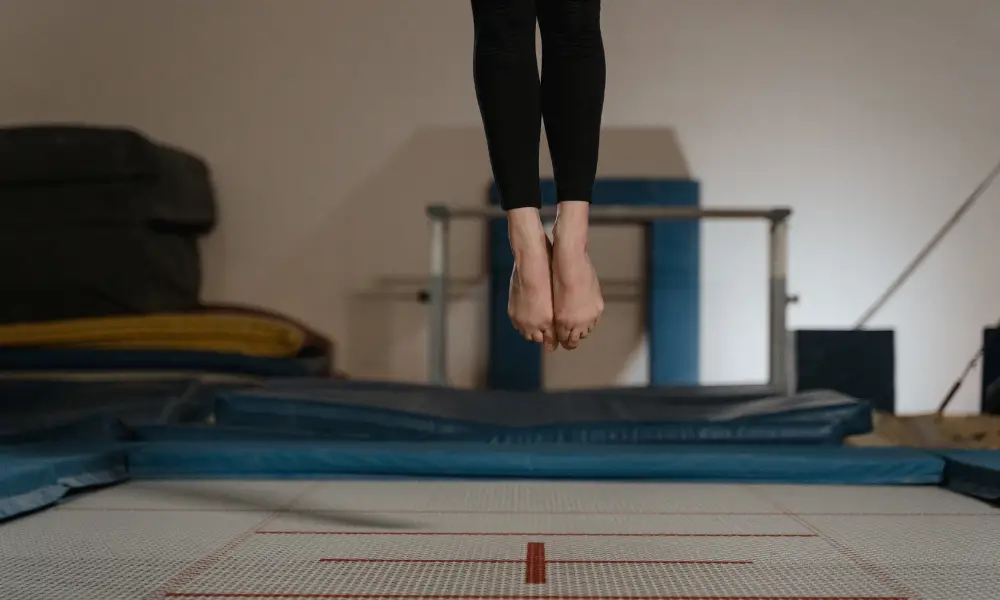
Think of yourself as a tightly wound spring, ready to explode into the air with power and precision.
Mastering the jump and tuck technique is like unwinding that spring – it propels you to new heights while allowing you to maintain control throughout your aerial adventure.
To perfect this technique, focus on three key elements: jump height, tuck speed, and arm positioning.
These elements are essential for fear-conquering and confidence-building when attempting a trampoline backflip.
- Jump Height: The higher you jump, the more time you have to complete your backflip. Practice jumping straight up with your arms above your head, using your legs’ full extension for maximum height. Avoid leaning too far forward or backward during takeoff; maintaining proper body alignment ensures a clean rotation.
- Tuck Speed: Once airborne, quickly tuck your knees toward your chest while maintaining a tight core. This will help generate rotational momentum. Keep in mind that the faster you tuck, the quicker you’ll rotate – finding the right balance between speed and control is crucial for success.
- Arm Positioning: As mentioned earlier, start with arms extended above your head during takeoff. As you initiate the flip by tucking them in mid-air, swing them down towards your knees. Your arms play an important role in controlling rotation speed. Use them wisely to fine-tune adjustments during flight.
As you continue practicing these techniques individually and then combining them into one fluid motion, trust yourself and remain committed to each attempt’s process.
Remember that patience is vital; mastering a trampoline backflip takes time and dedication but will result in an immense sense of accomplishment once achieved successfully!
So keep pushing forward with determination while maintaining safety precautions at all times – soon enough, you’ll be flipping through the air like a pro!
Executing the Flip
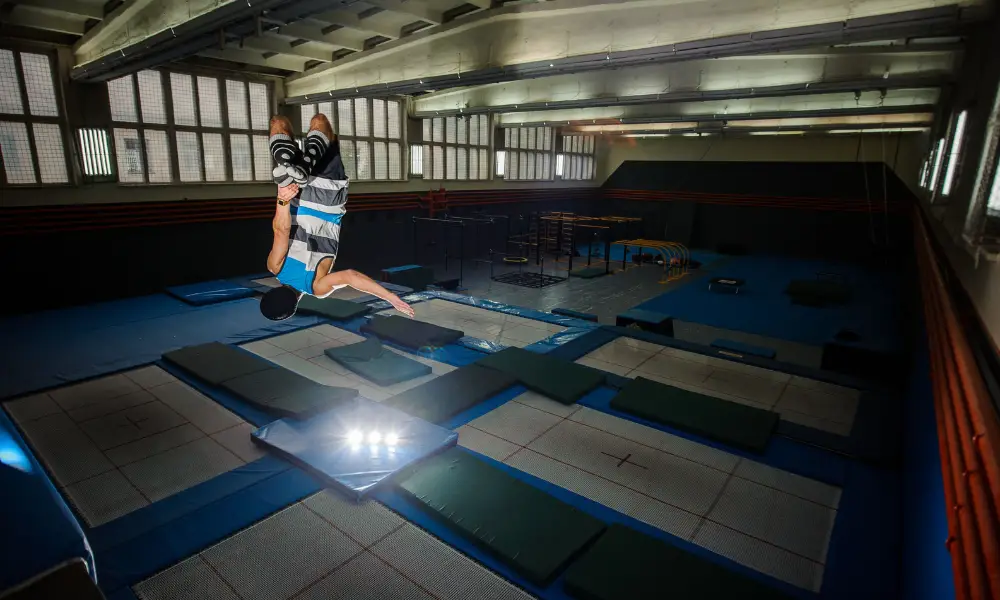
Once you’ve mastered the jump and tuck technique, it’s time to put your skills into action and execute the flip with confidence and flair.
One of the essential components of a successful backflip is generating enough flip momentum. To do this, use your arms to swing powerfully upwards as you launch into your jump while keeping your body straight.
As you gain height, tuck in by bringing your knees up towards your chest. This will help maintain a tight rotation and ensure proper body positioning throughout the flip.
Overcoming fear is another crucial aspect when executing a trampoline backflip. Remind yourself that you’ve practiced each step diligently, so trust in your abilities and focus on spotting the landing during the flip.
As you start descending from the peak of your jump, open up from the tucked position and spot where you’ll land on the trampoline mat. This helps gauge when to extend or bend your legs for a controlled touchdown.
As you grow more comfortable performing basic backflips on a trampoline, challenge yourself by exploring different backflip variations such as layout flips (extending full-body mid-air), pike flips (touching toes in an inverted V shape), or even twists combined with flips for added excitement!
Always remember to practice safety first: consider using pads or having someone knowledgeable nearby to assist if needed while learning new moves.
With perseverance, dedication, and proper technique, mastering these advanced flips will become an exhilarating accomplishment that showcases both skill and style!
Perfecting Your Landing and Safety Tips
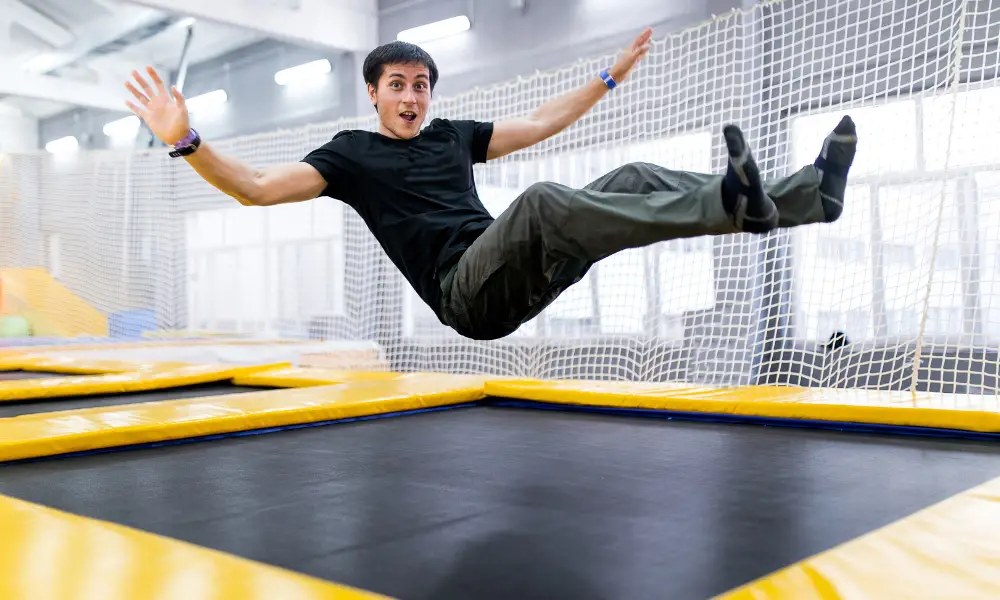
Nailing that smooth landing is the cherry on top of a spectacular backflip performance, and keeping safety in mind ensures you can continue to improve without unnecessary risks.
Safe training begins with spotter assistance, which means having someone experienced nearby to help guide you through the motions and provide support if needed.
Fall prevention is also crucial – practice your flips over soft surfaces or use a trampoline with netting to minimize potential injuries. Protective gear, such as helmets and pads, can offer an additional layer of security during your practice sessions.
Wearing appropriate footwear with good traction is also essential for maintaining a grip on the trampoline surface.
Don’t forget about trampoline maintenance; regularly check springs, padding, and the frame for any signs of wear or damage that could pose a risk during your flips.
Keep these safety tips in mind as you perfect your backflip landing: maintain awareness of your body’s position throughout the flip, tuck in tightly to gain rotation speed, and focus on spotting the trampoline surface as early as possible to prepare for a controlled landing.
By prioritizing safety alongside skill development, you’ll be well on your way to mastering impressive trampoline backflips without compromising your well-being.
Conclusion
In the end, mastering a trampoline backflip is like learning to ride a bike – it takes practice and courage. Keep building your basic skills, work on perfecting your technique, and always prioritize safety.
With determination and patience, you’ll soon be flipping with ease. So go ahead, conquer those fears, and soar through the air like an acrobat.
Remember to follow these guidelines closely for a safe and successful journey into the exhilarating world of trampoline flips.

